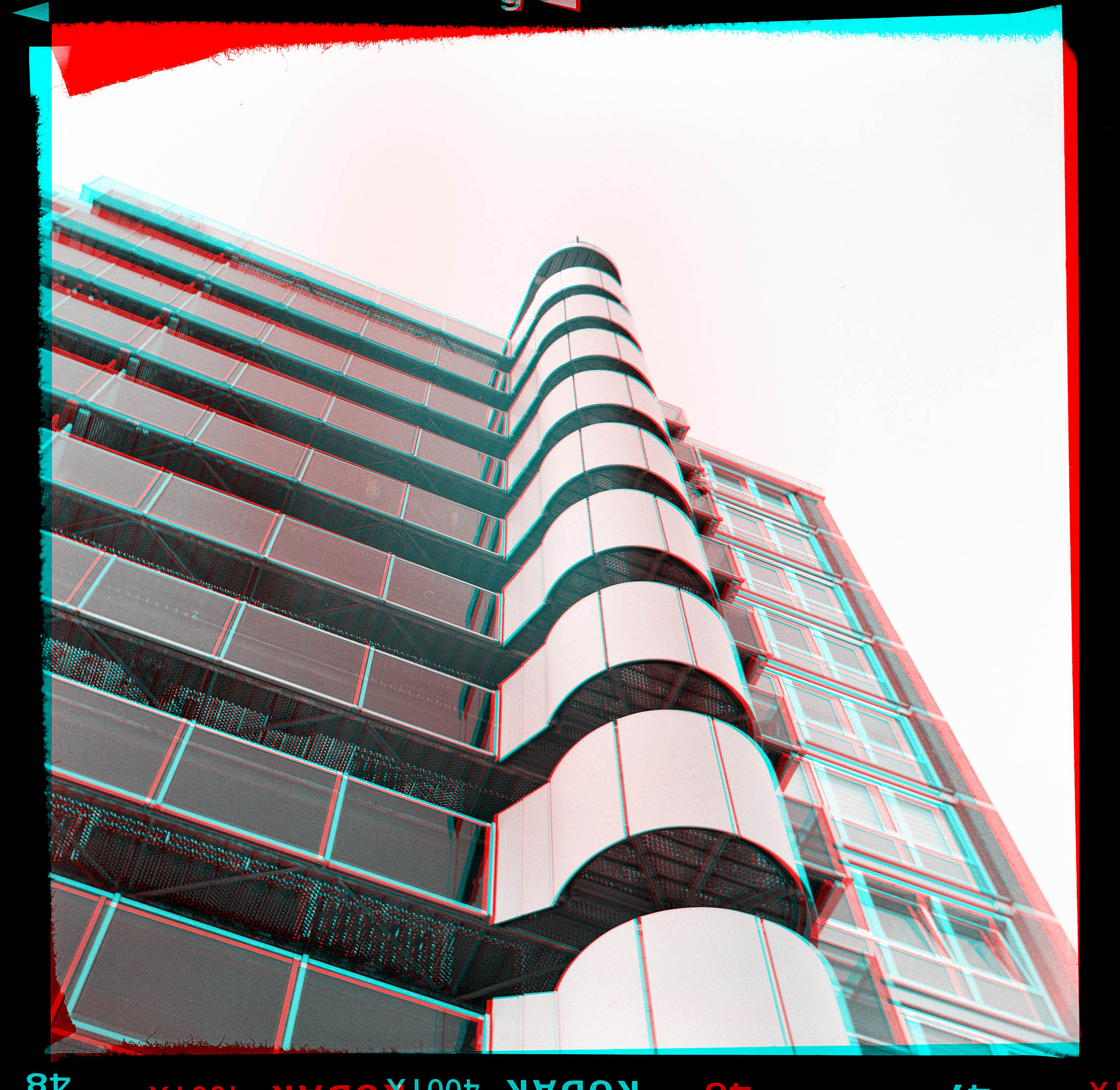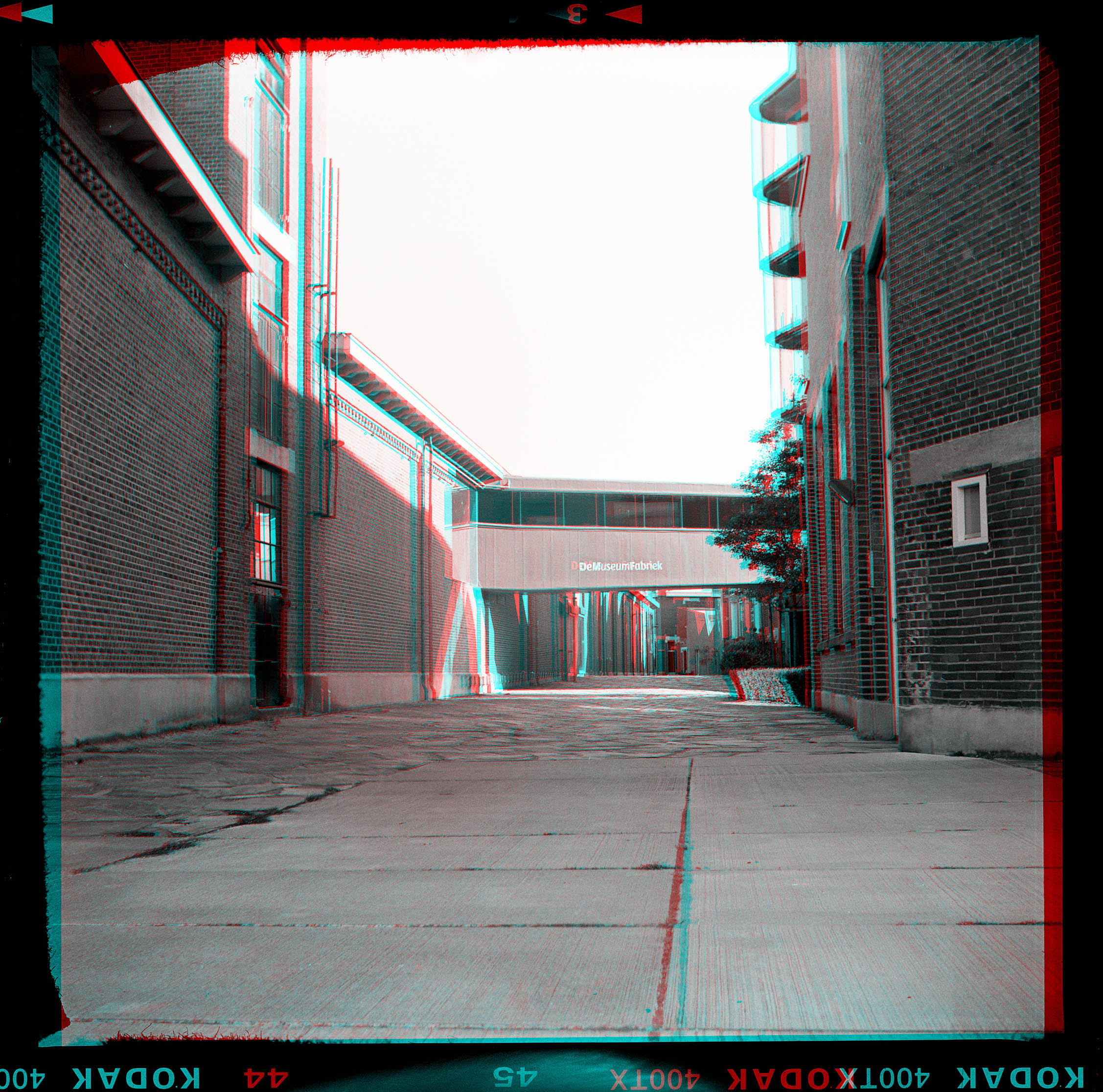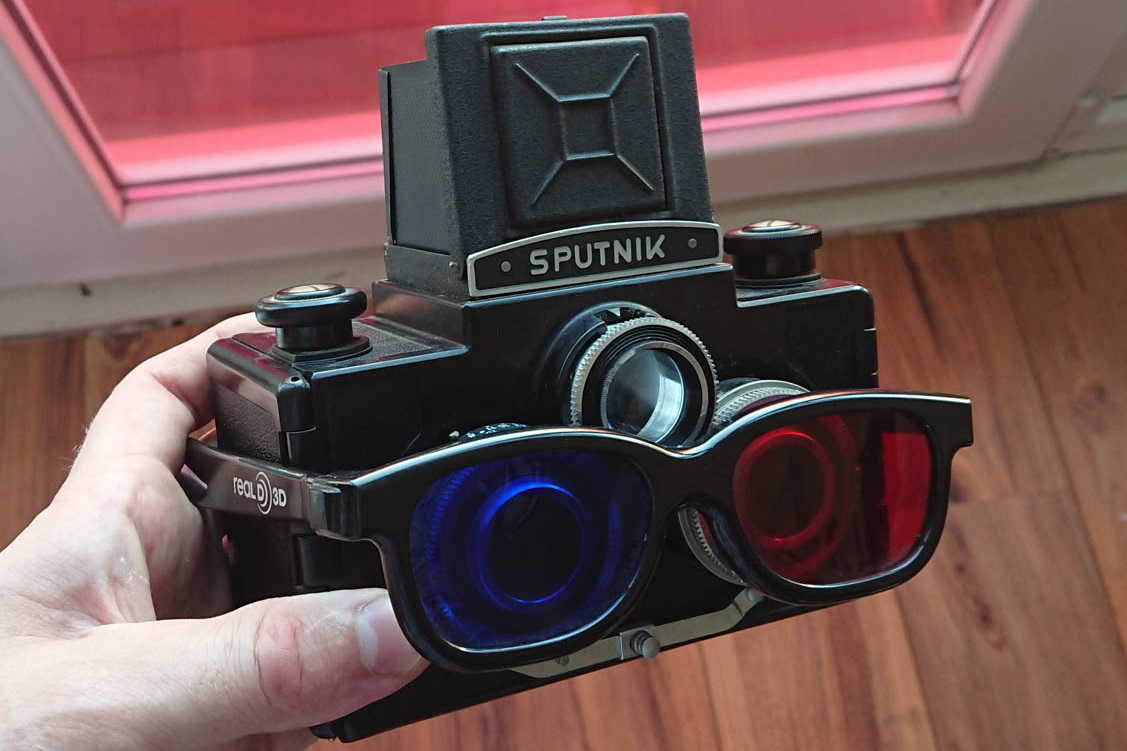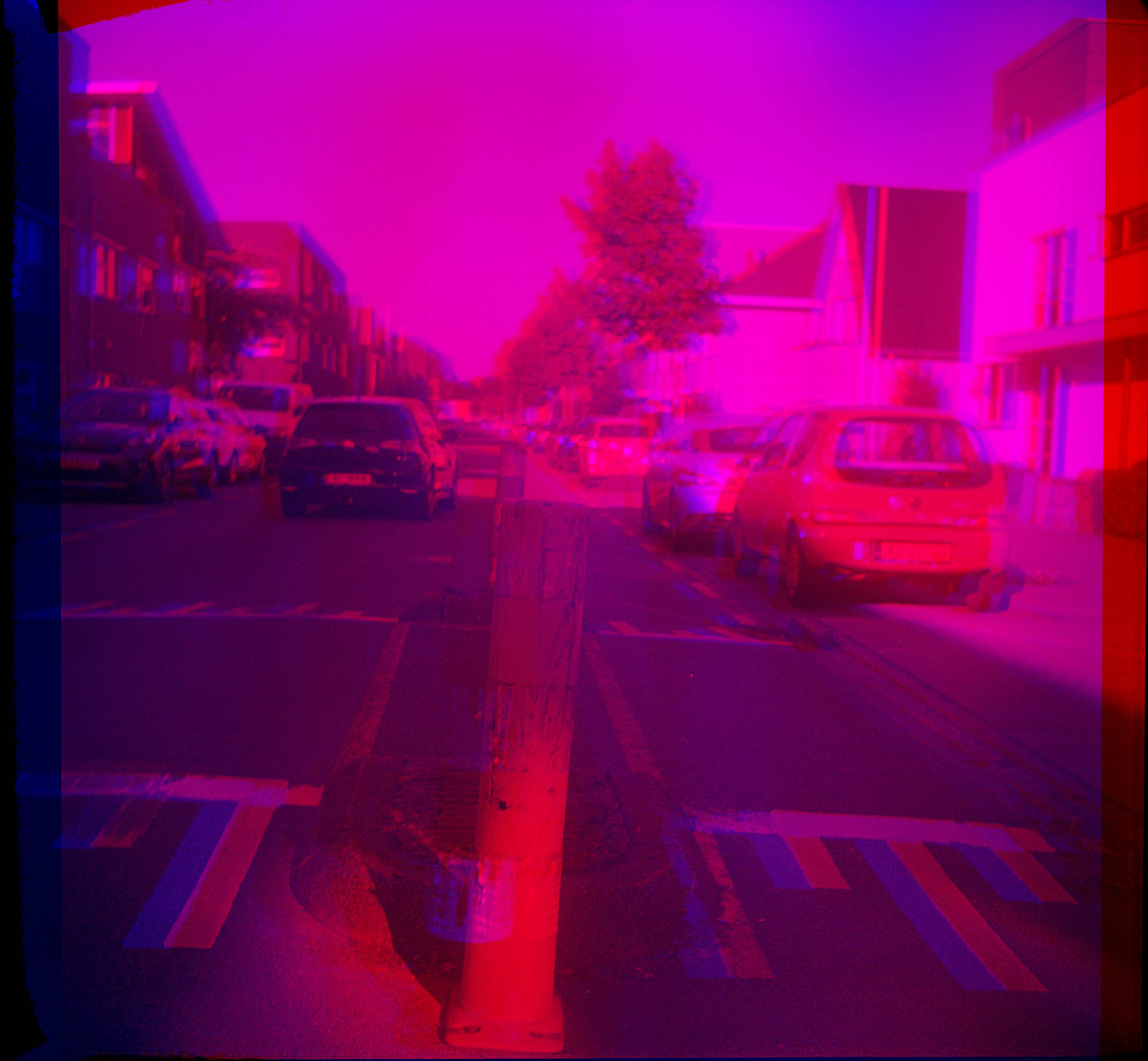Stereophotography: The first roll
images best viewed using red/cyan anaglyph glasses
Recently, I came across an old Russian stereocamera. It’s been something I wanted to try for a while, so I jumped at the chance. This model of camera was produced from 1955 to 1974 with only slight differences. My example is one of the later ones, between 1964-74. The camera takes a pair of 6x6 images on 120 film whenever you press the shutter, making it a very expensive camera to run. After a mere six image pairs a roll is full. From an engineering standpoint, the camera could hardly be much simpler- it’s a bakelite box, with three lenses on the front. Functionally, it’s the same as most TLR (twin lens reflex) cameras, just with an extra lens. Gears link the lenses so that they are all focused identically. Aperture controls and the shutters are linked internally. The lenses are uncoated, meaning they’re prone to flaring. All in all, it’s a basic, but easy to understand device. And, while basic, it’s able to produce results still!

Looking up at this building gives a certain dwarfing sensation, that’s impossible to capture in 2D.
When using this camera, the way you have to look at the world around you changes. Where most cameras produce a flat image, which makes distances seem irrelevant, (except for perspective) when using this camera, you acutely become more aware of the distances between objects, and have to think about how leading lines work in 3d.

In this picture, I tried to explore leading lines in a different direction, and see how a low camera standpoint affects the perception

